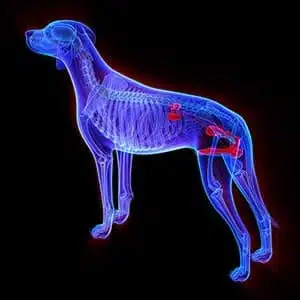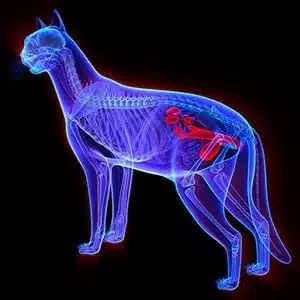Why is the Urogenital System Important?
The urogenital system includes the kidneys, bladder, urethra, and ureter. It also includes both the reproductive organs and the excretory organs. They are considered together because they share some common ducts. The excretory system is comprised of the kidneys, ureters, urinary bladder, and urethra.

Dog Urogenital System

Cat Urogenital System
A major factor in keeping the urogenital system functioning properly is the daily consumption of water. Increased fresh water intake supports healthy kidney function. Proper dietary nutrition (ingredients and the amount per feeding) is also a significant factor. Foods with lower oxalates can be beneficial because they reduce oxalate load and lower precursors for common urine/kidney stones. Oxalates, or “oxalic acid” is an organic acid produced in the body when foods are metabolized by the body. Basically, oxalates are the end-product of normal metabolism and are intended to leave the body through urine. Oxalic acid must be removed from the body in either feces or urine. Legume ingredients in our formulas such as chickpeas and peas are considered low oxalate foods.
When your dog or cat consumes protein in their diet, it also performs a valuable metabolic function in addition to its nutritional value. Protein increases urine volume and supports healthy kidney function. Protein is composed of nitrogen. Nitrogen waste is removed from the body by changing ammonia into urea. This process generates ‘metabolic water’ thus protein metabolism generates water that must be removed by the body. So the normal variety of nutrients in your pet’s diet all play an important role in maintaining the urogenital system. The quality of ingredients in a pet food can make a difference in how the system functions.
This is why we choose certain ingredients in our Lucy Pet’s Formulas for Life™.

